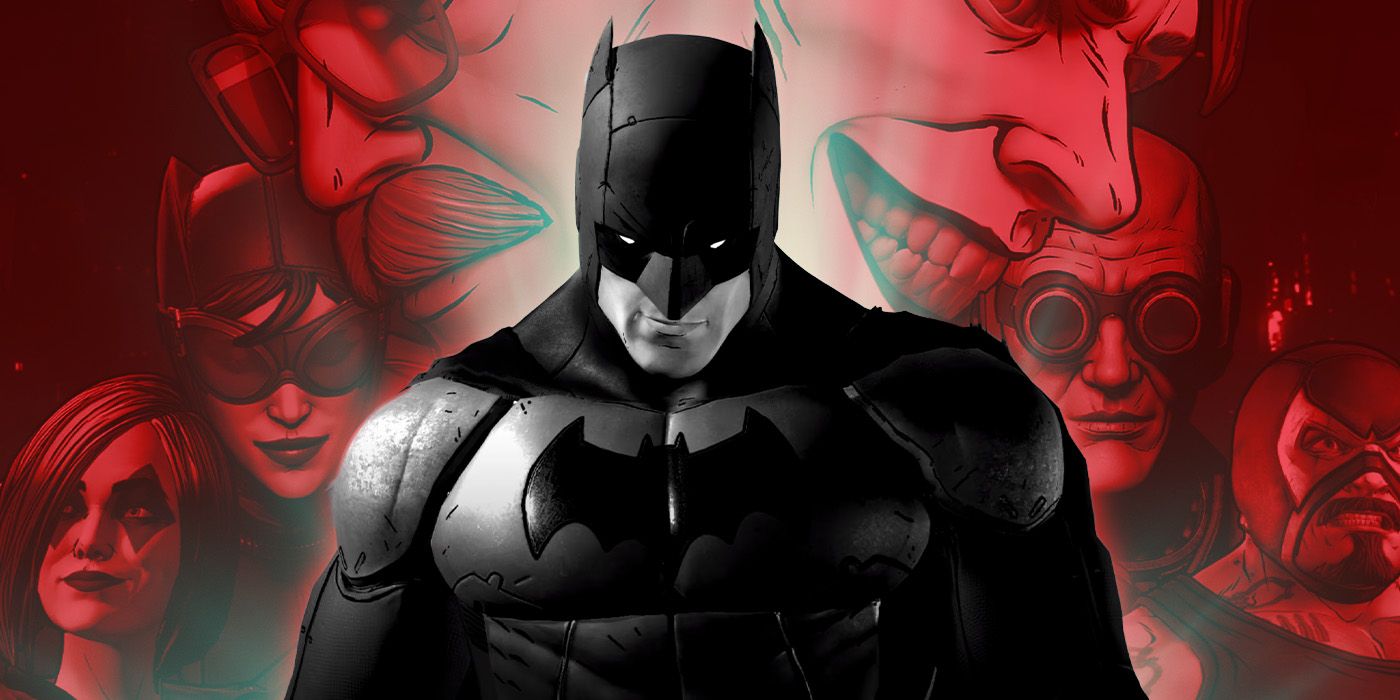[[{“value”:”
The Big Picture
Batman: The Telltale Series
is a decision-based video game that gives fans the power to shape the story of the Dark Knight.
The game humanizes classic DC villains, providing a fresh perspective on their origin stories for players to explore.
The sequel,
Batman: The Enemy Within
, surpasses its predecessor with higher stakes, new character dynamics, and unique endings to choose from.
When it comes to Batman, there have been a variety of films, video games, and TV shows that give fans a deeper look at one of DC Comics’ most popular characters. Some are accurate to that of the Dark Knight in the comics, while others branch out into an original story with the same Batman characters. Fans have got some wonderful stories, like The Killing Joke or Batman: The Animated Series, that will forever live on as Batman’s most memorable stories.
All of these are good candidates for being Batman’s greatest stories. However, none of them hold a candle to a Batman storyline that isn’t from a comic, movie, or TV series. It’s definitely not part of the New 52 story arc. One of Batman’s best stories, surprisingly enough, comes from Batman: The Telltale Series video game. How would a decision-based video game centering on one of the Dark Knight’s best stories fare? That’s exactly what makes it so great: fans get to make the choice of how the story goes.
How ‘Batman: The Telltale Series’ Storytelling Works
The story of 2016’s Batman: The Telltale Series is a rather interesting one. The game takes place a few years after Bruce Wayne (Troy Baker) becomes Batman, which gives players more flexibility in their choices to determine how they want Batman to be. Bruce discovers that his family has ties to criminal activity in the past, more specifically with crime lord Carmine Falcone (Richard McGonagle). As he is faced with heavy fire among the public, his alter ego, Batman, is investigating the criminal organization known as the Children of Arkham, led by somebody named Lady Arkham. The story balances between playing as Bruce and playing as Batman, but there are some choices where the player can interact as either alias more than the other. Fans get to explore familiar places like Wayne Manor and Arkham Asylum.
While there is a linear story, it’s up to the player to make the tough decisions that determine how Batman (and even Bruce) will be. Players can go the classic inspiring hero route, a trait that differs from how Batman typically acts in the comics, films, and TV shows. Or players can have Bruce/Batman act more cold and aggressive towards criminals and civilians and the like. In the usual Telltale fashion, each choice, big and small, will have some sort of consequence. Every decision affects Bruce’s/Batman’s relationships with the other characters and how the story progresses. The visuals of Telltale games give off a storybook vibe as well, which is alluring all on its own.
The Batman Telltale Games Humanize Its Villains
Batman: The Telltale Series gives players a different interpretation of the classic DC villains. With the setting taking place in the mid-to-late 2010s, it’s a “fresh interpretation of the universe set in current times, not tied to any existing iteration of Batman in games, film, or comics,” according to Telltale Games. Each character has a more modernized retelling of their individual stories that integrates well into the Telltale formula. With some villains, like Oswald Cobblepot (Jason Spisak), players can sympathize with how they became criminals in the first place. Oswald, also known as The Penguin, turned to a life of crime after his family lost their fortune due to Thomas Wayne, who also forcefully admitted Oswald’s mother into Arkham Asylum. He held a grudge against Bruce for what his father did, but had respect for Batman because he believed that they were both fighting for justice in Gotham.
Basically, the criminals in Batman: The Telltale Series are more humanized than they are usually depicted in the comic books and other forms of media. There’s still a sense of comic likeness to their characters, like with John Doe (Anthony Ingruber), who later becomes the Joker in the Batman Telltale sequel Batman: The Enemy Within. Their personalities are reminiscent of the comics as well. However, it was a smart decision on Telltale’s part to give all the characters retellings of their stories. Not only does it help differentiate them from the comics, but the modernized setting makes them feel more human. The player’s interactions as both Bruce and Batman determine the direction of the story, and depending on the choice, drive certain characters like Harvey Dent (Travis Willingham) to villainy.
Why ‘Guardians of the Galaxy: The Telltale Series’ Is Worth Revisiting
“More than I can chew? Ha! You put something in this mouth and I’m gonna chew it. I’m gonna chew it so hard..!”
The Sequel Is Just As Great as ‘Batman: The Telltale Series’
Batman: The Telltale Series sequel brought in other beloved characters like Harley Quinn (Laura Post), using the same formula as the previous game. The Enemy Within‘s story is arguably better than its predecessor. The role reversal of Harley and Joker was a risky move, but it played out in Telltale’s favor. The overall character design surpassed Batman: The Telltale Series as well. The stakes in the choices were higher than before, ultimately leading the player into one of two endings. Players could either betray John Doe and lead him into becoming a villain, keeping to the classic Batman-Joker nemesis relationship like in the comics. Or, players can continue to be friends with him, and he becomes a vigilante version of the Joker and partners with Batman, which is a more original story.
Telltale always had a way of staying true to its sources (like with The Walking Dead) while distancing the games to create something unique. Batman: The Telltale Series and Batman: The Enemy Within‘s choice-driven stories help fans really get to know the characters on a more personal level. Sometimes video game adaptations of characters are better than live action. At the end of the day, these heroes and villains are still human. The criminals make bad decisions, but so does Batman. Each decision the player makes drives the story in the direction that makes sense to who they are as a person. In a way, Bruce/Batman and the player are one and the same. That’s what makes Batman: The Telltale Series such a great story. The player shapes the entirety of their game, and they are given the chance to be a true Batman or emphasize with its characters and make choices that Batman or Bruce wouldn’t usually make.
Fans have their own understanding of Batman and everything that makes up Gotham. Some fans prefer the traditional comic book modes of Batman adaptations, with colorful but off-the-walls villains that Batman defeats. Others prefer the modernization of the characters because they’re more relatable. Batman: The Telltale Series combines both while having an all-original story that the players direct into their own telling. The game is one of the best Batman stories of the late 2010s era and is still recognized today, despite the Telltale Games studio closing in 2018.
You can play Batman: The Telltale Series and Batman: The Enemy Within on Android, PlayStation 4, Nintendo Switch, Xbox One, IOS, and Windows.
“}]] Having a hand in the story is immersion you can’t get anywhere else! Read More

